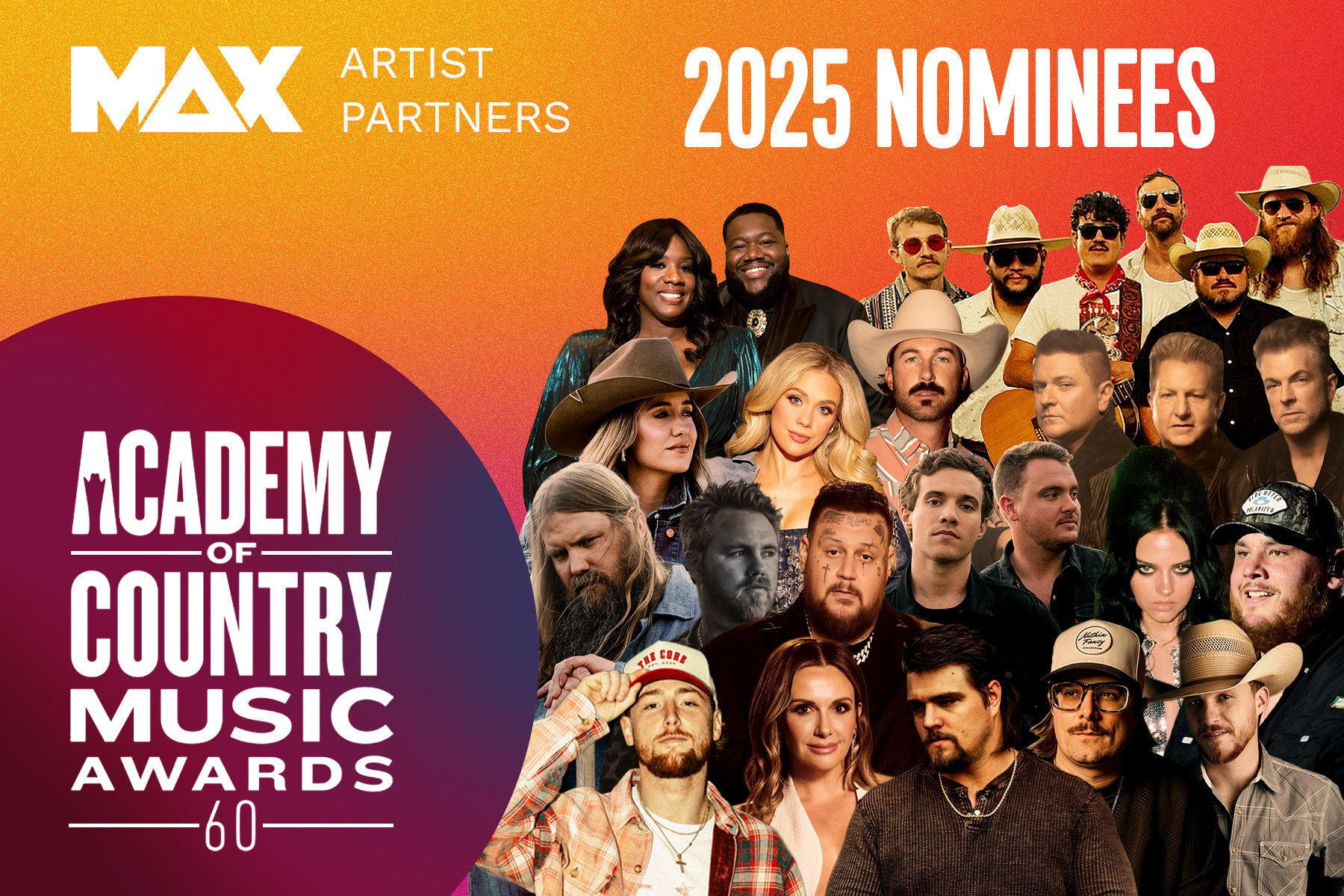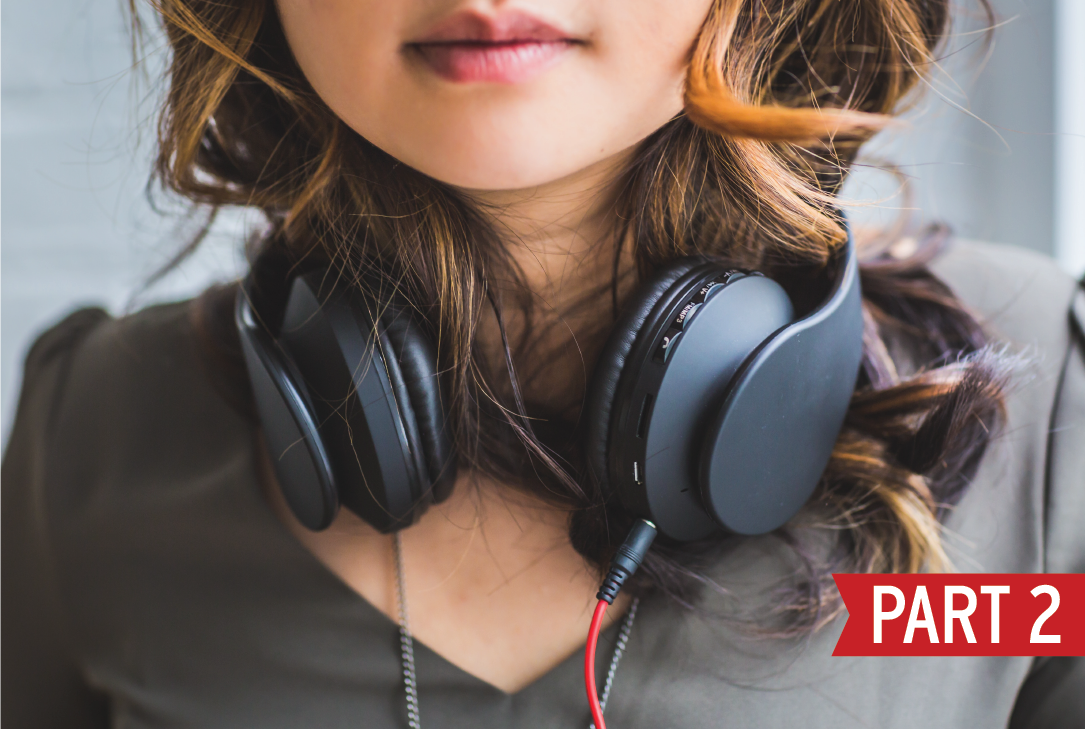2025 ACM Awards
We’re beyond thrilled to celebrate our incredible MAX artist partners who’ve secured nominations for the 2025 Academy of Country Music Awards—our...

Last week we discussed how music helps us define ourselves as individuals. This week, we examine the power that music has to connect.
In a world of segmentation, where we often define ourselves by our differences, music offers a chance for shared experiences: a means of rising above divisions and connecting in an extraordinarily personal way. Understanding the unifying power of music can help brands create messaging that will influence diverse consumers in a meaningful way.
As children, our first exposure to music is through our parents and primary caregivers. From the first lullabies used to soothe us, to the educational songs used to teach us foundational skills, music helps us to connect with the people around us. The bonds forged through music connect us with our family, but this connection can extend to strangers as well. A study on shared cultural knowledge found that children as young as four and five years old prefer companions who like the same type of music as they do. This research shows that the shared experience of listening to music and dancing helps us cultivate relationships and makes us more likely to have positive associations with the people who share our musical preferences.
While brands would be hard pressed to form the same kinds of bonds with people that family members do, they can still harness the goodwill that shared musical experiences give. By forming a genuine, mutually beneficial partnership with an artist, a brand can participate in the communal musical experience with the artist and the target audience, forming an authentic bond between the three, and fostering positive perceptions of the brand.
As we go through our adolescent years, we begin to find our place in the world, shaping our identity through music and other forms of self-expression. We look beyond familial preferences and start to discover music that helps us define who we are and establishes our social circle. As adolescents, our musical preferences are often accompanied by a particular fashion style and personality affectation, as we attempt to find where we “fit in.”
As we enter into adulthood, our musical preferences mature with us. We concern ourselves less with emulating our friends, and more with discovering ourselves. Throughout our personal changes, however, we are still able to maintain relationships through shared musical experiences. We may now have different political or religious views, but we are bonded by the concerts we attended together; the albums we shared with each other; the songs that connect our souls.
Through music, brands can create a sense of community, and elicit an emotional connection with their target audience. By aligning themselves with an artist in a sincere partnership, and helping an artist share their music, a brand becomes a part of the artist’s community, and can form a meaningful connection with fans.
While music helps us to form close-knit communities in “real life,” it also helps us to expand our connections across cultures and across borders. Our Pandora station dedicated to our favorite US rap artist could introduce us to a Swedish swing band with an avid, active fan-base. When we start following the Swedish band, we become connected with people around the world who share our passion for “scrumping jazz.” The members of this community may be separated by miles and oceans, but the bonds formed by a shared love of music are powerful.
Music’s ability to unite people who may not even share a common language is compelling. It should inspire brands to begin to look at what other traits music fandoms share, and how to benefit from these commonalities. The demographic, psychographic, and sociographic data of artists’ fan bases can help brands identify which artist’s audiences to target based on brand objectives.
Next week, we will look at how technology has changed the way we discover and share music and how brands can use modern technology to map the massive amount of consumer behavioral data available to artists and brands. We will also look at the way artists can use this data to make strategic and authentic business decisions that further their music careers. Bri Bagwell, an independent country artist and Music Audience Exchange alumna, used our MAX Artist Matching Engine™ and her campaign analytics to learn more about her fan base. Bri learned that her fans were DIY enthusiasts and she was able to leverage this information into a successful partnership with HGTV. We’ll tell you more about Bri, and examine the technology behind the marriage of music and marketing.

Music Audience Exchange (MAX) was founded in 2014 with a mission to help champion incredible music and the artists who make it through strategic, data-driven partnerships with brands. MAX brings brands into the music promotional space in a way that puts engaging content into the world through a value-exchange model that drives the brand's objectives, and elevates breakthrough bands along the way.If you’d like to learn more about Music Audience Exchange and what a music promotion program would look like for your brand, send us a note.

We’re beyond thrilled to celebrate our incredible MAX artist partners who’ve secured nominations for the 2025 Academy of Country Music Awards—our...

We’re fired up to celebrate our incredible artist partners who are nominated for the 2025 Blues Music Awards! 🎶🏆Blues music may be timeless, but...

It’s a common question: what drives the cost of an artist partnership up (or down)? I mean, an artist’s fee can range from four to seven figures…and...

What if I could tell you the type of car someone is inclined to drive, if they drink soda or beer, if they enjoy being outdoors, or even what city...

A while back, we looked at why music helps brands strike a chord with fans. With all of the changes in our lifestyles and habits, we decided to...

Last week we discussed the power that music has to connect brands with consumers. This week, we delve more into the insight that marketers can learn...